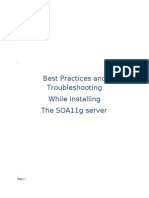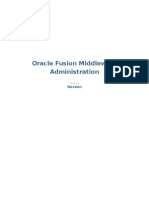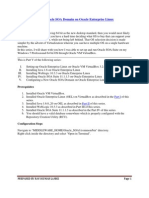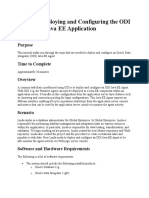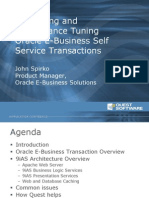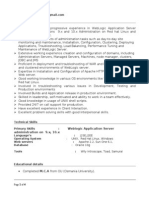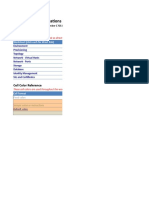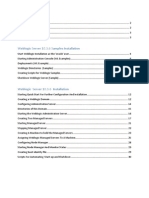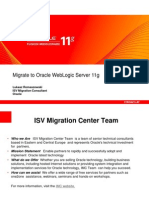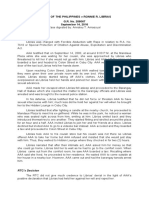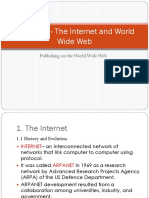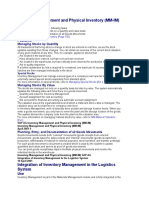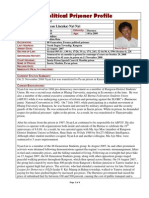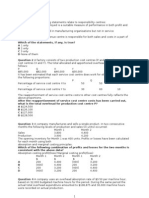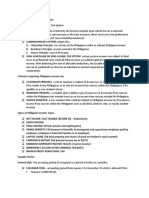0% found this document useful (0 votes)
107 views115 pagesLab 01 Getting Started With Oim 11g
1. The document provides details about getting started with OIM 11g, including directory structures, database configuration, starting middleware components, and using various OIM consoles.
2. It describes the locations of the Oracle database, middleware home, WebLogic domain, OIM and SOA installations, and other relevant directories.
3. It also gives the database instance name and users, and explains how to start and stop the database, WebLogic Admin server, OIM managed server, design console, and other components.
Uploaded by
Sergio PessoaCopyright
© © All Rights Reserved
We take content rights seriously. If you suspect this is your content, claim it here.
Available Formats
Download as PDF, TXT or read online on Scribd
0% found this document useful (0 votes)
107 views115 pagesLab 01 Getting Started With Oim 11g
1. The document provides details about getting started with OIM 11g, including directory structures, database configuration, starting middleware components, and using various OIM consoles.
2. It describes the locations of the Oracle database, middleware home, WebLogic domain, OIM and SOA installations, and other relevant directories.
3. It also gives the database instance name and users, and explains how to start and stop the database, WebLogic Admin server, OIM managed server, design console, and other components.
Uploaded by
Sergio PessoaCopyright
© © All Rights Reserved
We take content rights seriously. If you suspect this is your content, claim it here.
Available Formats
Download as PDF, TXT or read online on Scribd
/ 115

